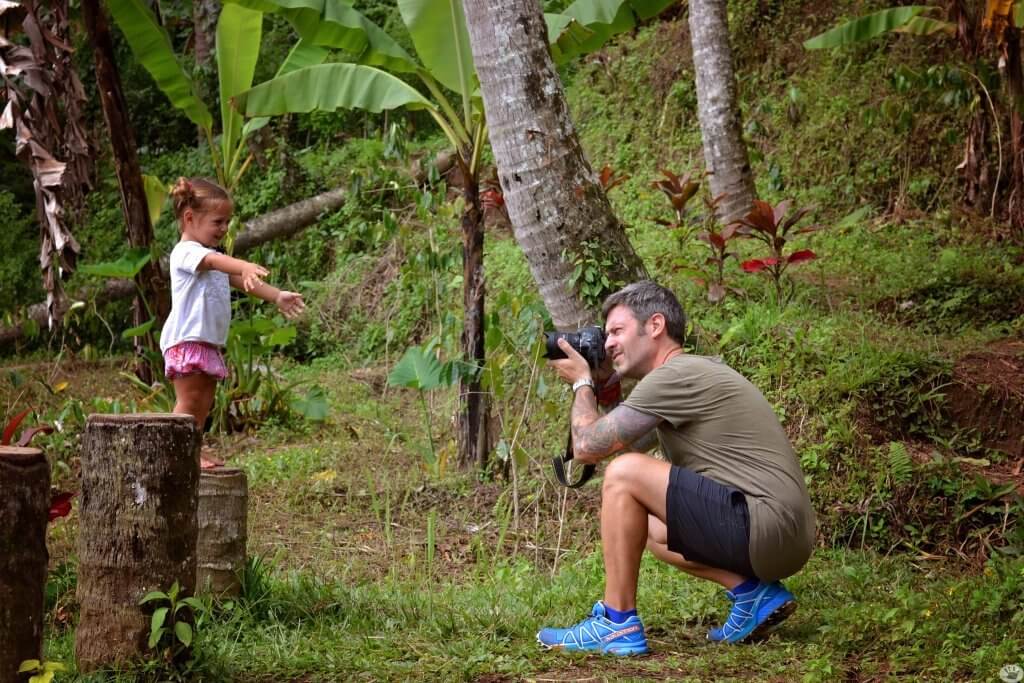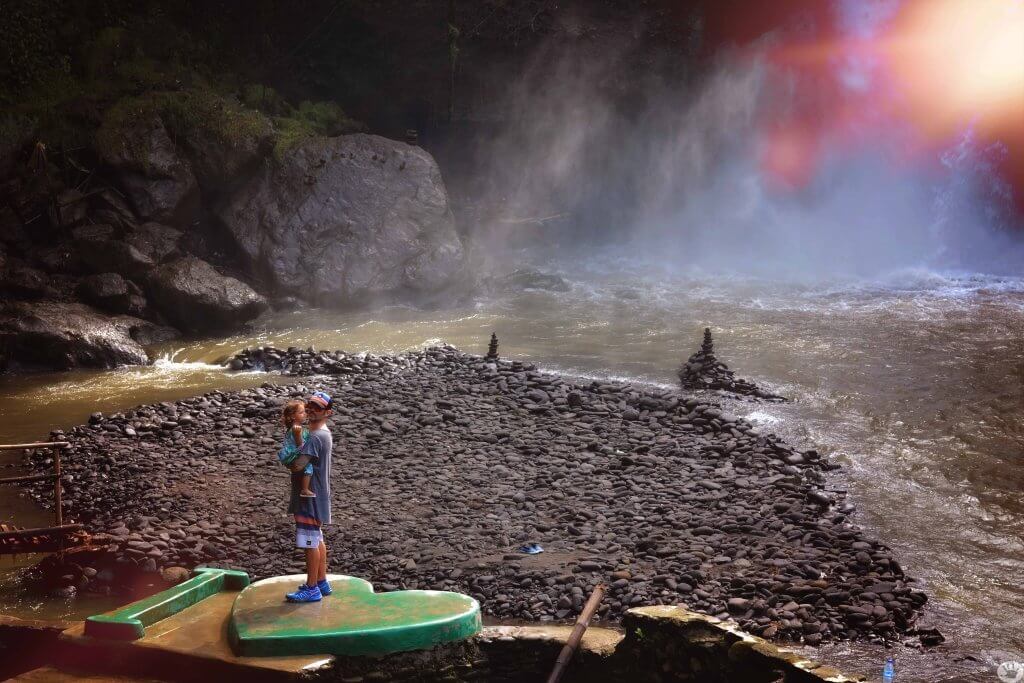The must-see stilt fishing in Sri Lanka

Hello Wanderluster, have you ever seen those pictures of fishermen perched on stilts with stunning, Instagram-worthy backgrounds?
We tak about
ToggleThat’s the traditional stilt fishing in Sri Lanka.
In recent years, it’s obviously become a popular tourist attraction, but it still holds a deep tradition that every traveler should learn about during their trip to Sri Lanka.
One of my favorite parts of traveling with kids is answering their questions: I’ve never learned so much on trips as I have since traveling with them.
Aldo and Giulia’s blunt and spontaneous questions constantly push me to research so I can give them the most accurate answers.
So, as we pass dozens of fishermen literally perched on vertical stilts in the water, the questions keep coming… and I learn with them.
I wish I had found an article like this when I needed it because I have to admit that finding detailed information about traditional stilt fishing in Sri Lanka is quite difficult.
Luckily, our driver was eager to chat and explain everything!
Keep reading to discover everything you need to know about stilt fishing in Sri Lanka.
An introduction to stilt fishing in Sri Lanka
Stilt fishing is one of the most fascinating and iconic traditions in Sri Lanka. This practice, deeply rooted in local culture, is a perfect example of how Sri Lanka’s coastal communities have adapted and lived in harmony with their surroundings. For families visiting this beautiful country, traditional fishing in Sri Lanka offers a unique opportunity to experience something authentic and immerse themselves in the iconic sites that define the island’s southern coast.
Stilt fishing in Sri Lanka is more than just a fishing technique; it’s a true symbol of local culture and a defining feature of Sri Lanka’s iconic landscapes.
The “recent” origins of stilt fishing in Sri Lanka
Although it seems ancient and primitive, stilt fishing is actually a more recent tradition.
It is believed that the practice began during World War II, when food shortages and overcrowded fishing areas led some men to try fishing underwater. Initially, they started fishing from the wreckage of sunken ships and downed planes, and then some began to erect stilts on coral reefs. The skills have since been passed down through at least two generations of fishermen who live along a 30-kilometer stretch of the southern coast between the towns of Unawatuna and Weligama.
Today, stilt fishing in Sri Lanka has also become a major tourist attraction, but supporting local tours through professional and local guides is a way to keep this tradition alive, which also greatly respects the surrounding environment.
Stilt fishing in Sri Lanka is an extremely sustainable type of fishing, where fishermen don’t harm their surroundings. Even though it’s obviously a tourist attraction in some places, supporting it helps local communities continue a tradition that would otherwise be lost.
Personally, I think stilt fishing in Sri Lanka is one of those tourist exceptions that’s worth promoting, as long as the tours are done consciously.
The story of the Weligama fishermen in Sri Lanka
The picturesque village of Weligama, located along the southern coast of Sri Lanka, is a place rich in tradition, culture, and natural beauty. Among its most precious gems are the Weligama fishermen, known for their unique fishing techniques and the fascinating way they navigate the waters of the Indian Ocean.
The story of the Weligama fishermen dates back to ancient times. These fishermen are descendants of a community that has passed down their knowledge and skills from generation to generation. Their culture is deeply tied to the sea and fishing, and every day, they carry on the traditions of their ancestors.
Stilt fishing, which involves using wooden poles that fishermen climb onto to fish in shallow waters, is not just a fishing strategy but has become an art in itself.
The fishermen perch on the poles to get a clear view of the fish swimming nearby, avoiding disturbing the surrounding waters and thus preserving marine life.
How the Weligama fishermen became famous
We often hear about tourism driven by social media, with more and more places becoming overcrowded tourist spots due to media exposure. Weligama, in its own way, became known through one iconic photo.
The Weligama fishermen in Sri Lanka are the stars of a famous photograph taken by Steve McCurry.
“Many ask me about the photograph I took in Sri Lanka of the fishermen who, early in the morning, go out with these very thin rods to catch small fish. It was an extraordinary situation: I was driving along the southern coast of Sri Lanka and noticed dozens of fishermen sitting on stilts in the sea. So one morning, I decided to walk into the ocean, up to where the water reached my chest, and spent an hour and a half taking photographs. They would climb onto the stilts and sit there to avoid scaring the fish: this is the whole purpose of the action.” With these words, the great photographer Steve McCurry (Darby, Pennsylvania, 1950) recounted, in an interview with the publisher Phaidon (and whose video is available on YouTube), one of his most famous photographs: the one he took in 1995 of the fishermen of Sri Lanka in Weligama, a town of about seventy thousand people facing the Indian Ocean in the south of the country.
The famous shot has been featured in countless exhibitions of which the American photographer has been the protagonist worldwide: the famous exhibition Cibo at the San Domenico Museums in Forlì explored the theme of food with eighty shots, many of which had never been shown before.
“It’s one of the photographs that make up the section of the exhibition that deals with food production,” explains Fabio Lazzari, curator of the Forlì exhibition. “McCurry photographed people involved in food production worldwide: there are fishermen, farmers, ranchers, saffron gatherers, rice fields in the Philippines, and an orange fruit picker.”
And indeed, the connection between this image and food is undeniable: this way of fishing sustained the populations of this part of the island for a long time. “The Weligama fishermen,” continues Lazzari, “are among McCurry’s most iconic photos, so much so that many people still visit Weligama today to try to recreate that photograph. This, in part, is also a sign of how McCurry has influenced the collective imagination through his photographs.”
McCurry spent nearly a day with the southern Sri Lankan fishermen to capture the right light for the photograph at different times of the day. For this reason, he had the opportunity to observe their fishing method for quite a long time. “I was surprised,” he said in the above-mentioned interview, “by the speed with which the fishermen caught the fish and put them in their bags.” He then made a bitter realization: “Unfortunately, I think this way of life will soon come to an end, as many of these young people find it more profitable to work in tourism, and this unique way of fishing will eventually disappear. What’s fascinating about this photograph is that we will always look at it in the years to come, marveling at how these men fish: we’ll think that this was an iconic situation we’ll never see again, and that to preserve this memory, this story of how we were, it’s important to document events like this.
Origins of traditional fishing in Sri Lanka
The origins of stilt fishing in Sri Lanka date back decades, when local fishermen began developing this technique to catch fish along the coral and rocky coasts. Traditional fishing in Sri Lanka evolved as a response to environmental needs and resource shortages during World War II.
Before, fishermen would simply climb onto rocks along the coast (since the poor inhabitants of these areas couldn’t afford boats).
The invention of stilt fishing seems to be due to overcrowding problems: there were too many fishermen and too few rocks, so at some point (though we don’t know exactly when), someone decided to start fishing directly in the sea. Over time, they refined the technique for preparing the fishing stilts, which requires skilled craftsmanship, as they must be strong, made from wood that won’t easily deteriorate in water, and tied in a way that ensures the fisherman’s safety. The same skills are needed to make the fishing rod: the fishermen also craft their own tools. The rods are made from thin twigs harvested from local plants, and the line ends with a homemade hook: the iron hook is shaped and worked to resemble a worm (the fisherman then makes it “dance” in the water to mimic the movements of prey: this way, they save money on bait, as they don’t need any). Among the fish caught are some species of mackerel and local herring, known locally as bolla and koraburuwa.
This approach not only represents a practical innovation but also embodies respect for nature and traditions, making stilt fishing one of the most authentic experiences you can have in Sri Lanka.
I’ve already written extensively about sustainable tourism and authentic experiences in the article Sustainable Safari in Sri Lanka.
What makes stilt fishing in Sri Lanka unique?
Stilt fishing in Sri Lanka is unique because of its deep connection to the land. Unlike other fishing techniques, this practice requires great skill and patience. The fishermen, balanced on their stilts, wait for fish to come near, all while immersed in a setting that is one of the most photographed iconic locations in Sri Lanka.
What truly makes traditional fishing in Sri Lanka special is its authenticity: it’s not just a tourist attraction but a genuine daily activity for the local communities. Joining or even just observing this tradition allows travelers to fully immerse themselves in the authentic experiences that only Sri Lanka can offer.
Where to experience traditional fishing in Sri Lanka
For those seeking authentic experiences in Sri Lanka, stilt fishing is a must. This practice, deeply rooted in the local culture, can be observed in several iconic locations along the island’s coast. Discovering these places will allow you to dive into one of the most fascinating traditions of traditional fishing in Sri Lanka.
Iconic stilt fishing locations in Sri Lanka
If you want to witness stilt fishing in Sri Lanka, there are a few iconic locations you can’t miss. These places not only offer a spectacular view but also provide a deeper understanding of the importance of this tradition in the daily life of local communities. Traditional fishing in Sri Lanka is an integral part of the cultural landscape, and the fishermen who practice it are living symbols of the authentic experiences that make Sri Lanka unique.
The best times to observe stilt fishing
To fully experience stilt fishing in Sri Lanka, it’s important to choose the right time. Fishermen are most active at sunrise and sunset, when the sea is calmer and the fish come closer to the shore. These are the best times to observe traditional fishing in Sri Lanka, as the iconic spots along the southern coast come alive with unique colors and sounds. Watching this tradition in the early morning or at sunset will let you capture the essence of authentic experiences in Sri Lanka, making your trip even more memorable.
Stilt fishing in Sri Lanka as part of your family trip
For the Miniwanderlust Team, traveling means, above all, learning. That’s why including stilt fishing in Sri Lanka in your family trip becomes a unique opportunity to introduce the kids to one of the island’s most fascinating traditions.
This kind of experience not only enriches the trip but also gives kids the chance to immerse themselves in local culturesand discover the iconic places in Sri Lanka in an authentic and meaningful way.
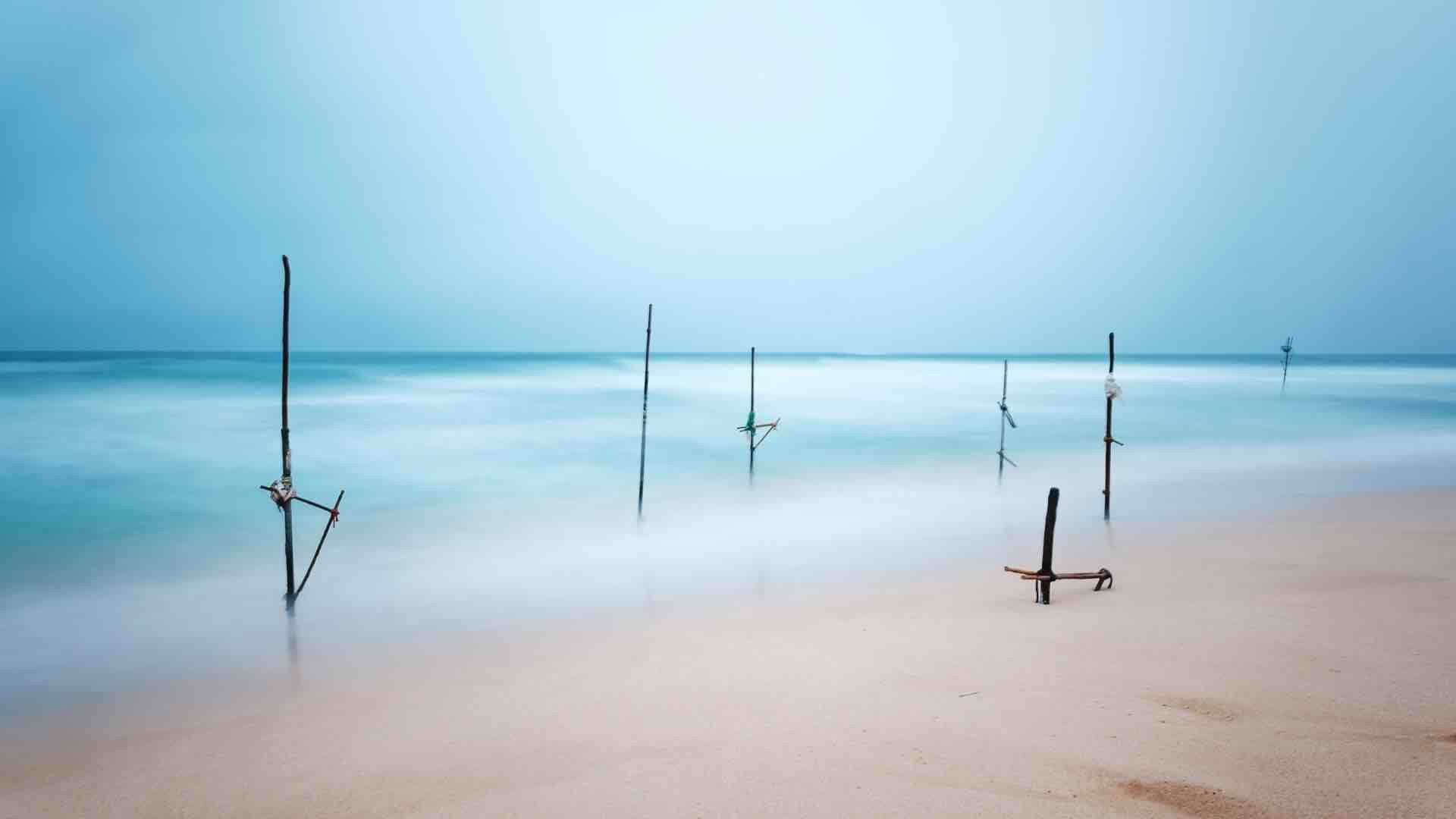
Authentic experiences in Sri Lanka with kids
Traveling in Sri Lanka with kids means discovering a world of adventures and traditions that can broaden their understanding of the world.
Stilt fishing in Sri Lanka is one of the authentic experiences that can be especially fascinating for kids—and of course, for parents too.
Watching the fishermen at work, understanding the traditional techniques, and learning how this practice fits into the daily life of local communities offers kids a unique educational opportunity during the trip.
Another amazing experience that will capture the attention of both kids and adults is definitely a visit to Sri Lanka’s tea plantations. If you’re interested, here’s the link to the detailed article.
Introducing kids to local culture
Traditional fishing in Sri Lanka is a chance to introduce kids to local culture in an interactive and engaging way. Watching the fishermen in action on their stilts allows young travelers to appreciate the ingenuity and perseverance needed to sustain this tradition. Additionally, visiting the iconic spots where stilt fishing is practiced can spark kids’ curiosity, encouraging them to ask questions and learn more about the country’s history and culture.
These kinds of authentic experiences in Sri Lanka make the trip not only fun but also educational for the whole family, and that’s where our beloved Edutainment comes into play. (Click the link to find out what it’s all about)
How to include traditional fishing in Sri Lanka in your itinerary
Adding stilt fishing in Sri Lanka to your travel itinerary is easy and can greatly enrich your experience on the island. If you’re planning a trip to Sri Lanka, here are the most authentic and less touristy places where you can witness stilt fishing in Sri Lanka:
- Unawatuna
- Weligama
- The southern coasts
The southern coasts of Sri Lanka
The southern coasts of Sri Lanka are undoubtedly the iconic locations where you can best experience stilt fishing. Regions like Galle, Koggala, and Ahangama are famous for their many fishermen who climb onto their stilts every day to fish. These areas, with their breathtaking beaches and crystal-clear sea, provide the perfect setting to observe traditional fishing in Sri Lanka. Here, visitors can not only admire this practice but also take spectacular photos of one of the island’s most emblematic authentic experiences.
Tips for a responsible visit
When planning to observe traditional fishing in Sri Lanka, it’s important to do so responsibly and respectfully.
- Don’t disturb the fishermen while they work.
- Support local communities through local guides who respect traditions and the environment.
- Choose times of day when the fishermen are most active, such as sunrise or sunset, to ensure an authentic and rewarding experience.
This way, you’ll not only fully experience stilt fishing in Sri Lanka but also help preserve this precious tradition for future generations.
Photography and stilt fishing in Sri Lanka
Stilt fishing in Sri Lanka is not just a fascinating tradition to observe, but also an extraordinary photographic subject.
We don’t need to replicate the famous Steve McCurry shot, but a good dose of originality certainly won’t hurt during our authentic tour with the fishermen of Sri Lanka.
The combination of breathtaking landscapes, natural light, and the unique silhouette of the fishermen on the stilts makes this an unmissable opportunity for photography lovers.
Capturing the essence of traditional fishing in Sri Lanka through your lens allows you to take home tangible memories of one of the island’s most iconic and picturesque locations.
How to capture the essence of traditional fishing in Sri Lanka
To truly capture the essence of stilt fishing in Sri Lanka, it’s important to understand not only the photographic technique but also the cultural and natural context in which this practice takes place. Traditional fishing in Sri Lanka offers a scene rich in details and contrasts: the calm sea, the stilts emerging from the water, and the fishermen patiently balancing as they wait. Every element helps create images that tell a story of tradition, resilience, and beauty.
To get memorable shots, focus on the aspects that make this experience authentically unique, such as the fishermen’s posture, the movement of the water, and the colors of the sky at sunrise or sunset.
And if you want to know our top 3 must-haves when it comes to photography gear for traveling with kids, head to the dedicated article.
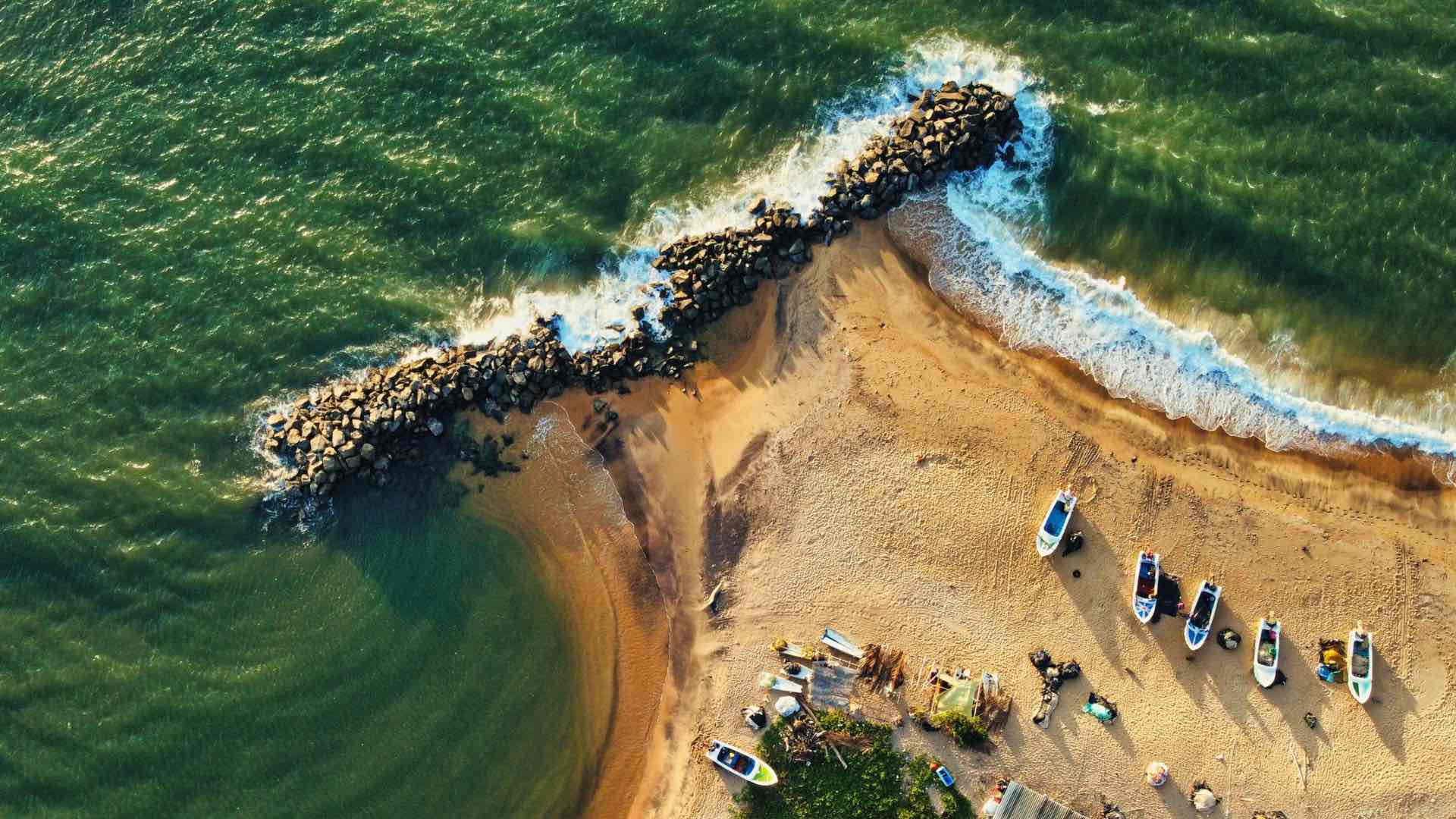
The best times to photograph stilt fishing
The best times to photograph stilt fishing in Sri Lanka are at sunrise and sunset, when the natural light is softer and more enveloping. During these hours, the fishermen are active, and the atmosphere is perfect for capturing the essence of traditional fishing in Sri Lanka. The golden morning light and the warm glow of sunset not only enhance the details of the stilts and the human figures but also create a striking contrast with the blue sea and the colorful sky. These moments are ideal for capturing one of the most fascinating authentic experiences in Sri Lanka’s iconic locations.
Conclusion: Why stilt fishing in Sri Lanka is an authentic and unmissable experience
Stilt fishing in Sri Lanka represents a journey through the island’s culture and traditions. This practice is not only a daily activity for many locals but also a symbol of their adaptability and connection to the environment. For families traveling, watching or participating in this experience is a way to experience Sri Lanka authentically, discovering one of the most iconic aspects of its culture.
A journey through Sri Lanka's iconic locations
A journey through the iconic locations of Sri Lanka wouldn’t be complete without witnessing stilt fishing. This unique tradition embodies the essence of the authentic experiences Sri Lanka has to offer, providing a window into the daily lives of the coastal communities.
Stilt fishing represents not only the natural and cultural beauty of Sri Lanka but also the importance of preserving these traditions for future generations.
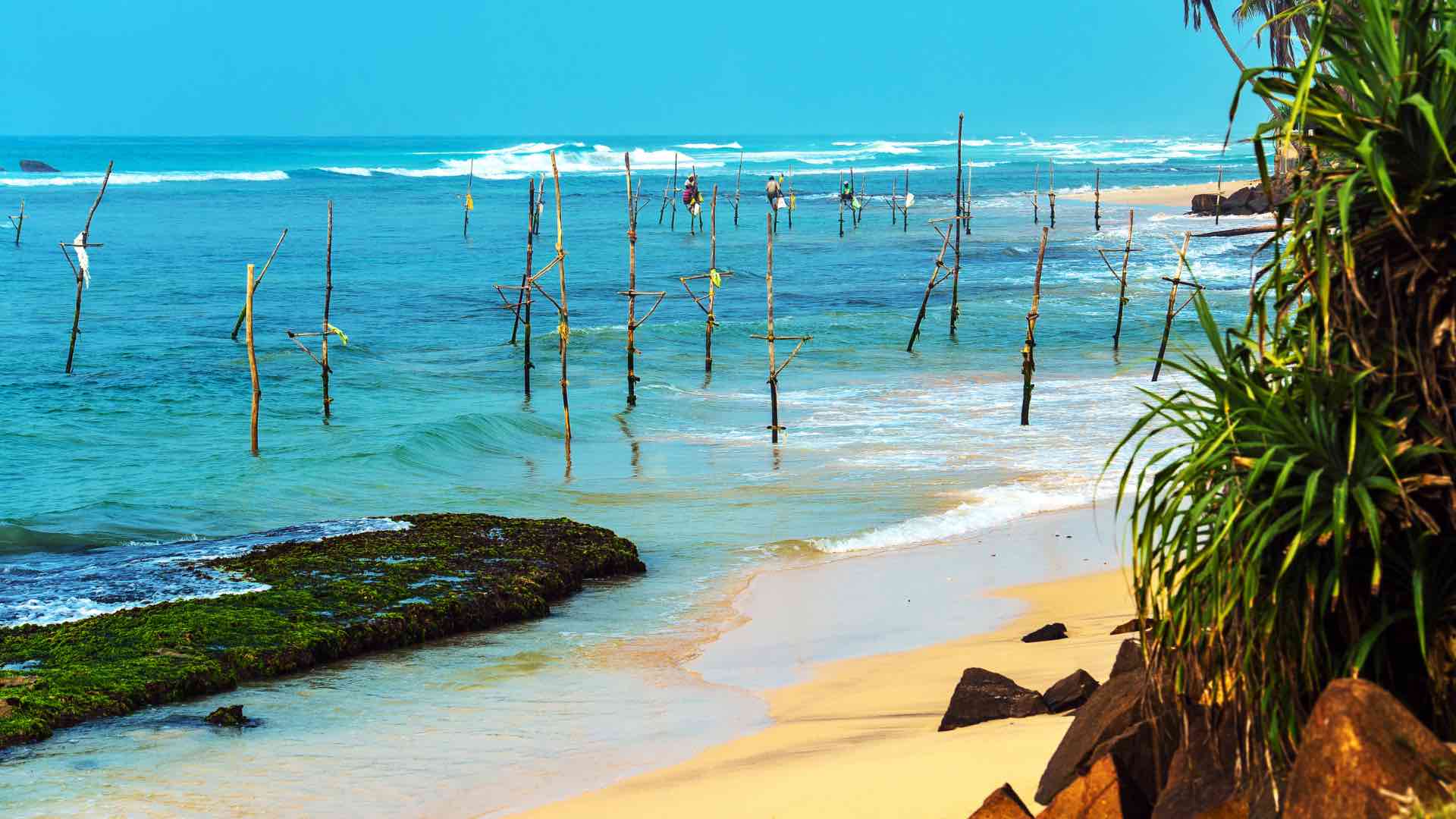
FAQ on stilt fishing in Sri Lanka
What is stilt fishing in Sri Lanka?
Stilt fishing in Sri Lanka is an ancient tradition where local fishermen sit on poles planted in the seabed to fish. It’s an art passed down through generations and represents one of the island’s most iconic and authentic experiences.
Where can I see traditional fishing in Sri Lanka?
You can observe traditional fishing in Sri Lanka along the southern coasts, particularly in the regions of Galle and Koggala, which are considered iconic locations for this practice.
Can I participate in stilt fishing in Sri Lanka?
Although stilt fishing is mainly practiced by locals, some tours offer the opportunity to get closer to this tradition, allowing you to experience authentic moments and better discover the local culture.
What’s the best time to see stilt fishing in Sri Lanka?
The best time to observe stilt fishing in Sri Lanka is during sunrise and sunset when the fishermen are most active. This is also the ideal time to take striking photographs of this tradition.
Why is stilt fishing considered an authentic experience in Sri Lanka?
Stilt fishing in Sri Lanka reflects the local culture and traditions, offering travelers an immersion into the daily practices of coastal communities. It’s one of the authentic experiences not to be missed when exploring the island’s iconic locations.
Before I say goodbye, here’s a link to a stunning but less famous photo than McCurry’s: National Geographic photo
Digitally Yours
☀️ Sara ☀️

